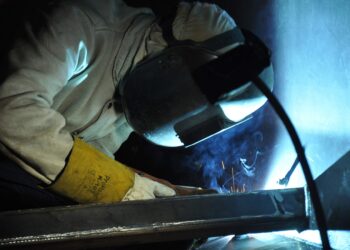Slovakia’s ascent to the pinnacle of the automotive industry in Central and Eastern Europe (CEE) is a narrative of strategic industrial evolution and economic acumen. The landlocked nation, with its population of just over five million, has metamorphosed into a powerhouse of car production, earning the moniker of the world’s largest producer of cars per capita.
The roots of this transformation are anchored in a fertile business climate that has attracted a plethora of automotive giants. Volkswagen, Peugeot, and Kia have all established substantial production facilities in Slovakia, enticed by a combination of government incentives, a strategic location in the heart of Europe, and a skilled yet cost-effective labour force.
Volkswagen, the harbinger of this automotive revolution, set up shop in Bratislava in the early 1990s. Since then, the plant has burgeoned into one of the most versatile within the Volkswagen Group, producing a diverse range of vehicles from city cars to luxury SUVs, including the flagship models of the Volkswagen Touareg, Audi Q7, and Porsche Cayenne.
Peugeot followed suit, with its plant in Trnava producing models like the Peugeot 208, which has been warmly received across the continent for its blend of style and efficiency. Kia’s Žilina facility, meanwhile, contributes significantly to the region’s economy, manufacturing popular models such as the Kia Ceed and Sportage, which have found a robust market in Europe and beyond.
The impact of these manufacturing goliaths on Slovakia’s economy is manifold. The automotive industry directly employs a substantial proportion of the workforce and contributes a significant percentage to the nation’s GDP. Moreover, it has catalysed the growth of a vibrant network of suppliers and service providers, from component manufacturers to tech firms specialising in automotive innovation.
Slovakia’s strategic embrace of automotive manufacturing has also spurred advancements in research and development within the sector. Partnerships between the automotive industry and Slovak technical universities have given rise to innovation in areas such as electric vehicle (EV) technology and sustainable materials, ensuring the industry’s future competitiveness.
The government’s role in nurturing this automotive boom has been instrumental. By offering investment stimuli and fostering an environment conducive to manufacturing and export, it has positioned Slovakia at the forefront of automotive excellence within CEE. Initiatives to improve infrastructure, such as better road and rail links, have further integrated Slovak car production into the European supply chain.
However, the success of Slovakia’s auto industry is not without its challenges. The shift towards green energy and the rise of electric vehicles pose a transformative challenge, one that Slovak industry is meeting head-on with investments in EV production and associated technologies. The push towards digitalisation and automation also presents both opportunities for growth and the need for workforce reskilling.
In conclusion, Slovakia’s automotive industry has become the engine of economic growth for the country and a beacon for the broader CEE region. Through strategic positioning, investment in people and technology, and a forward-looking approach to industry trends, Slovakia’s auto industry has crafted a model of development that drives not only vehicles off the production lines but also propels the nation’s prosperity into the fast lane.






